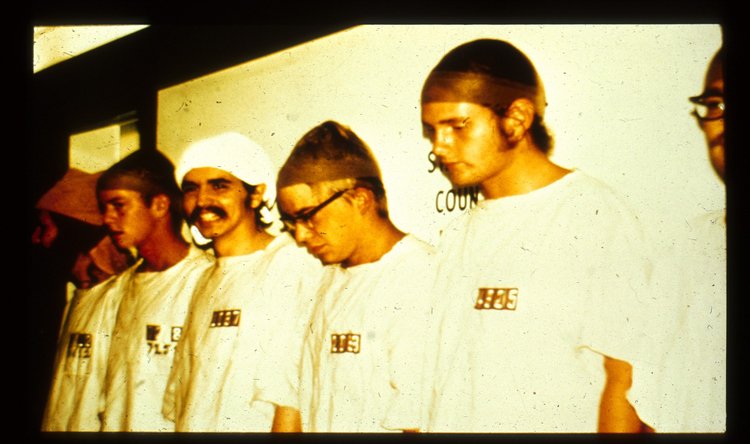36 Hours in Knoxville
/(And, there are no better poster-making poster children than the KnoxPopArt promoters, Yee-Haw Industries.)
|
(And, there are no better poster-making poster children than the KnoxPopArt promoters, Yee-Haw Industries.)
|
(I also enjoy the information graphic consulted by the judges. Sort of like a menu of mustaches!)
|
The Pain Exhibit covers just about the entire landscape of life and, consequently, of pain: fear, love, torture, loss of faith, acceptance, hope and transformation.
Some of the images from the exhibit depict the physical side of pain; others convey the emotional challenges of chronic pain.
|
You see it in religion, politics, families, companies, offices, on the university campus, on teams. Shakespeare's whole career was based on describing the betrayal and dysfunctional loyalties of nations and kin.
From an excerpt of The Fiefdom Syndrome: The Turf Battles That Undermine Careers and Companies - And How to Overcome Them by Robert J. Herboldat:
In in European medieval times, under the system of feudalism, a fiefdom often consisted of inheritable lands or revenue-producing property granted by a liege lord, in return for a form of allegiance. However anything of value could be held in fief, such as an office, a right of exploitation (e.g., hunting, fishing) or any other type of revenue, rather than the land it comes from. source: WikipediaThe problem begins when individuals, groups, or divisions--out of fear--seek to make themselves vital to their organizations and unconsciously or sometimes deliberately try to protect their turf or reshape their environment to gain as much control as possible over what goes on.
It is a natural human tendency, probably dating back to the origin of our species. But if this human tendency isn't managed properly, the damage caused by these "fiefdoms" can begin to undermine an organization. Left untouched, fiefdoms can toll the death knell of what should have been a strong and vital organization...
The SocialEdge conversation gets at the importance of understanding--and working with--the realities of fiefdoms and social change, particularly in overcoming this destructive behavior for social good.
|
|
In the English dictionary, however, crisis is defined as "a point in a story or drama when a conflict reaches its highest tension and must be resolved."
While the Developed World frets over the current multi-nodal RealEstateSubPrimeFinancialMarketTradeDeficit crisis--which continues to suck the value out of most of America's larger financial assets--the rest of the developing world is again struggling to afford the basics, namely, food.
In this case, the Cyrilla [oil supply] and Charybdis [demand for crops] have the same source: the global race for energy.
Time's recent article, titled The Clean Energy Scam, desn't throw a monkey wrench into the machine behind biofuels as much as it points a finger at the rising world food costs and slash-n-burn behavior it has inspired in the Amazon.
A rebuttal from 25x25, a non-profit supported financially by the Energy Future Coalition, laments, "Unfortunately, the story's message of concern is undermined by misinformation about biofuels and an over-simplified analysis of complex systems."
The main law of complex systems remains: Small changes can have large, unpredictable effects.
"This is due to higher demand from countries like India, China, where GDP grows at 8-10 percent and the increase in income is going to food," Diouf said after meeting India's farm minister, Sharad Pawar. |
There! I have done it.
I've just doomed my progeny by procuring breakfast essentials for Saturday morning cartoon-watchers!
The folks at Worldchanging.com are seriously challenging me, and our communities, by pushing against the greenest of our most well-intentioned green-consumerism, by declaring: "But there is a danger in thinking that all we have to do is design better substitutes for the products we already consume, and then convince people to buy them."
|
I want to get a hold of this simply for the complex information graphics demonstrating how to execute moves like the Moonwalk and The Reverse Centipede.
The American Foundation for Suicide Prevention reports that an average of 19 million Americans suffer from depression. Of these suffers, over 30,000 will take there own lives, with almost 20,000 of these suicides are aged 15 to 34-years-old.
Every day, approximately 80 Americans take their own life, and 1,500 more attempt to do so.
Depression has, of course, many causes: economics, family history, neurobiology and microchemistry, physical or emotional trauma.
However, the most profound source seems to be a person's interpersonal relationship with their surroundings and the people around them.
More than half (55%) of all online American youths ages 12-17 use online social networking sites, according to a 2007 national survey of teenagers conducted by the Pew Internet & American Life Project. So why is suicide among young people rising?
From Sense of belonging a key to suicide prevention
Wed Apr 2, 2008 3:13pm EDT
They can also look to the American Foundation for Suicide Prevention (http://www.afsp.org/), the National Suicide Prevention Lifeline (http://www.suicidepreventionlifeline.org/), and the National Strategy for Suicide Prevention (http://mentalhealth.samhsa.gov/suicideprevention/fivews.asp) for information. |
Alphachimp LLC is a visual learning company based in Houston, Texas.
Through drawings, animations, and the design-thinking process we help people understand complex situations and make better decisions.
We provide a cluster of inter-related services in the area of visual learning, graphic facilitation, problem-solving, and innovation.

COPYRIGHT © 2022 ALPHACHIMP, LLC
ALPHACHIMP® and ROCKSTAR SCRIBE® and DOODLES IN MOTION® are registered in the U.S. Patent and Trademark Office.